Maybe this is a familiar scenario. You arrive at your hotel and are greeted by a cheerful guest attendant at the front desk. As you wait for your key, you scan the lobby. It’s clean and the sun is shining nicely through the windows, but despite the sunshine, there is still something dingy and stale about the space. You make your way to your room, open the door and are ready to settle into your accommodations for the next few days. Only, what you see is not a pretty sight. The room carpet is worn, the bedspread is outdated, the walls are as drab as the artwork that is hanging on them, and the bathroom lighting is poor. Right then and there, you take a silent vow that this will be both your first and your last stay here.
This type of guest experience is unfortunate, but happens far too often if a hotel has not set a schedule for consistent renovation. Hoteliers say there are basically three cycles in a hotel’s life: refurbishment, basic renovation and complete renovation typically at 6 years, 12 years and 18 years.
When it comes to hospitality interior design, you may think a renovation project is far less complicated than new construction. At JAI, we don’t take anything for granted. We know there are strong considerations that need to be analyzed before beginning a renovation project of any size. The work we are about to do will have an enormous contribution to the overall guest experience, and we always want our clients to receive the highest guest satisfaction ratings as well as ROIs for their investment with us.
Essential Hotel Renovation Considerations for Interior Design Success
Know The Property
Is it located on a historic site and are there unique architecture features in or on the building? If so, those items are critical to the interior design schematics. A good design will always play to the strengths and history of the overall building.
Start with Organization
From the beginning, keep proper documentation about which items and finishes will remain in the renovation and which will no longer be used. With renovations, there is a great deal of architectural coordination that needs to happen before the interior process can be fully delivered, so clear processes and communication are always valuable.
Uncover Potential Surprises
Try to work with the entire renovation and operations team to uncover any unknowns lurking behind walls, under floors, in ceilings, etc. that could adversely affect the timeline and budget. There will always be unexpected elements, but the less surprises, the better.
Understand the Budget Parameters
Understand the goals of the brand and the ownership before getting started. That way, staying within the parameters of the budget while producing the desired outcome is more feasible.
Develop an Accurate Timeline
Renovating a property often requires more due diligence and planning than building a new one. Setting a timeline that includes adequate time for the review and approval process can save both time and money.
In the past few years, many major hotels have embarked on substantial, and much-needed, renovation projects. JAI has been pleased to participate as the interior design firm for several hotel renovation projects.
Follow us on Facebook to get the latest JAI news, pictures and project updates.
Coming soon…
From Concept to Construction Part 2: Renovation Evaluation


